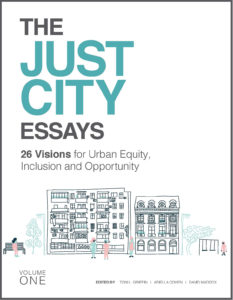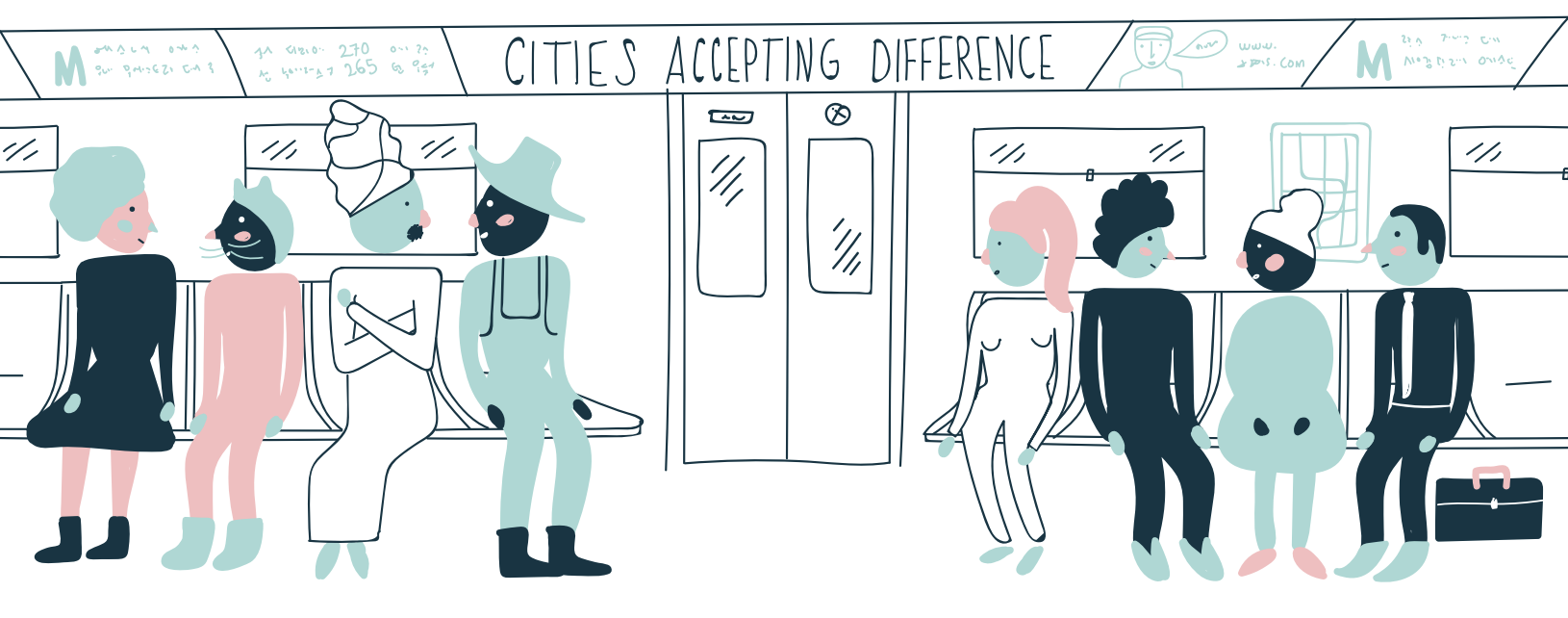“Five years ago, the Harvard Graduate School of Design’s Just City Lab published The Just City Essays: 26 Visions of Inclusion, Equity and Opportunity. The questions it posed were deceptively simple: What would a just city look like? And what could be the strategies to get there? These questions were posed to mayors, architects, artists, philanthropists, educators and journalists in 22 cities, who told stories of global injustice and their dreams for reparative and restorative justice in the city.
 These essays were meant as a provocation, a call to action. Now, during these times of dissonance, unrest, and uncertainty, their contents have become ever more important. For the next 26 weeks, the GSD and the Just City Lab will republish one essay a week here and at designforthejustcity.org. We hope they may continue conversations of our shared responsibility for the just city.
These essays were meant as a provocation, a call to action. Now, during these times of dissonance, unrest, and uncertainty, their contents have become ever more important. For the next 26 weeks, the GSD and the Just City Lab will republish one essay a week here and at designforthejustcity.org. We hope they may continue conversations of our shared responsibility for the just city.
We believe design can repair injustice. We believe design must restore justice, especially that produced by its own hand. We believe in justice for Black Americans. We believe in justice for all marginalized people. We believe in a Just City.”
—Toni L. Griffin, Professor in Practice of Urban Planning, founder of the Just City Lab, and editor of The Just City Essays
Defining the Just City Beyond Black and White
By Toni L. Griffin
When I think about the Just City, it’s always Black and White.
I was born in Chicago the evening before President Lyndon Johnson signed the Civil Rights Act of 1964 into law. Growing up on the south side of Chicago meant that on an average day, I rarely saw or interacted with a person who didn’t look like me. All of my basic needs were met on the south side of Chicago—schooling, shopping, summer jobs, recreation and entertainment. My teachers were predominately black, and my classmates were 98 percent black. This environment did not make me feel isolated, segregated or unusual—I just felt normal. Television was my only reminder that I was a “minority.” While I did not regularly see people who looked like me on TV, this didn’t stop me from deciding at the age of 14 that I wanted to be an architect—just like Mike Brady, patriarch of “The Brady Bunch.” By the time I entered college at the University of Notre Dame—and the field of architecture—my context became the exact opposite. For the first time in my life, I actually felt like a minority. And today, professionally, I remain a minority in my chosen field. I am the only African-American full-time faculty member at the City College of New York’s School of Architecture, and one of less than 300 AfricanAmerican women to be licensed in the United States.
My Just City is Black and White because I grew up in a racially segregated city.
I certainly did not realize how much of an impact Chicago’s urban form and spatial patterns would have on my perspective about cities. Nor was I aware of the profound impact that Chicago would have on my interactions with fellow urbanites and the work to which I would come to devote my career.
My work in architecture, urban design and urban planning spans several cities in the U.S., including Chicago, New York, Washington, Newark, Detroit and Memphis. All of these cities have similar racial patterns of segregation, and all have similar urban conditions, thanks to the impact of segregation on people and place. I would eventually come to know these urban conditions as the environments of social and spatial injustice. I now simply call them the conditions of urban injustice or justice. I define urban justice as the factors that contribute to our economic, human health, civic and cultural well-being, as well as the factors that contribute to the environmental and aesthetic health of the built environment. There are three conditions of urban injustice that I always seem to confront in my work in cities—conditions that began to reach the height of national awareness at the time of my birth in 1960s Chicago.
The first urban injustice conditions is concentrated poverty.
On the ground, spatial segregation has created pockets of concentrated poverty in our cities that, in turn, have created spatial and social isolation of those cities’ residents. Over multiple generations, this isolation has had a devastating impact on family structures, social networks, educational systems and access to economic opportunity.
For example, in Newark, N.J., where I served as the director of planning and community development for newly elected Mayor Cory Booker between 2007 and 2009, nearly 50 percent of all the people living in the central ward of the city lived in poverty, a condition that has persisted since a federal slum clearance boundary was drawn around the same area in 1961 and which suggests multiple generations of concentrated poverty.
The second urban injustice condition is disinvestment, crime, and the architecture of fear.
In the mid-1960s, attempts were made to revitalize the center city through programs such as Model Cities, a federal program that brought funding for redevelopment into communities with the greatest social and physical deterioration. However, the civil unrest of 1967 deepened disinvestment, and the city’s reputation for high crime and political corruption limited its ability to attract widespread capital investment for many decades. At the height of disinvestment and the federal programs designed to reverse this trend, including Model Cities and Urban Renewal, developers and institutions that felt unable to control the disinvested and crime-ridden environments around their land holdings directed architects to protect them from the adjacent urban decay via windowless recreation centers to keep children safe, elevated and enclosed skywalks from Newark Penn Station to the Gateway Center office campus that removed people from the dangerous streets, and a public community college constructed with uninviting, barrier-like building materials that created a fortress, protecting knowledge from the very public it was situated to serve. Continue reading on designforthejustcity.org…
